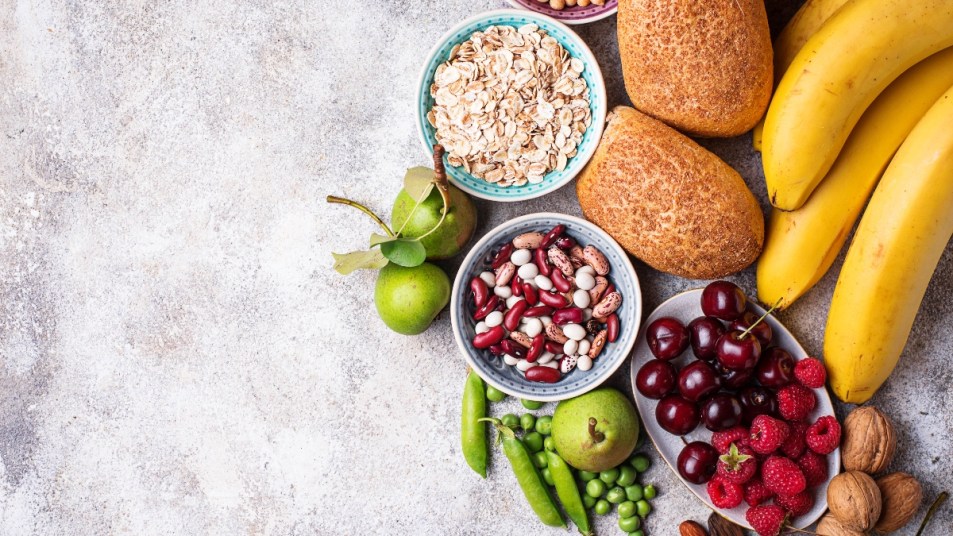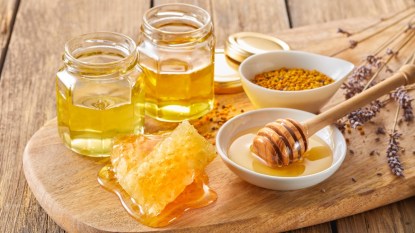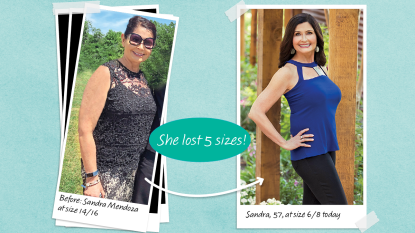Easy, High Fiber Foods That Will Help Your Digestive Health
It's an important diet change to make as we age.

Are you constipated and bloated for hours after every meal? If yes, you’re not alone — nearly 20 million Americans suffer from digestive symptoms, including constipation, bloating, and discomfort after eating. Thankfully, it doesn’t have to be this way. One of the most effective ways to support your digestive health requires just one simple change: Adding sources of fiber to your diet. Keep reading to learn the benefits of high fiber foods and the easiest ways to increase your fiber intake.
What is fiber?
Fiber is the part of a plant that our bodies can’t digest. Rather than breaking down and being absorbed by the body during digestion, fiber passes through us relatively intact — and though it sounds counterintuitive, it’s actually vitally important for digestive health. There are two types of fiber: soluble fiber and insoluble fiber.
Soluble fiber becomes a gelatinous substance in water and can be found in certain plants, including citrus fruits, beans, carrots, peas, oats, and apples. Soluble fiber promotes a healthy gut microbiome, which can help lower blood sugar and cholesterol. Insoluble fiber helps material move through the digestive system (read: no more constipation!) and can be found in green beans, cauliflower, potatoes, nuts, and whole-wheat flour.
Why are good sources of fiber important?
I hear it every time I see the doctor: “Add more fiber to your diet.” As tiresome as this is, it’s also true. Consuming a high fiber diet is increasingly important as we age. Aside from aiding in digestion, fiber may help lower cholesterol, maintain healthy blood sugar levels, help with weight loss, and even support you against heart disease. By regulating cholesterol and blood sugar levels, fiber may lower your chance of developing certain health risks. I plan to cheer on my grandchildren as long as I can, and if a high fiber diet can help with that, you better believe I’ll make it a priority.
Life goals aside, I also want digestive comfort now. It turns out that ingesting the right amount of fiber delivers constipation-free bliss. Fiber adds bulk to food as it passes through the digestive system, which stimulates the intestines and promotes regular bowel movements. Fiber can also decrease your chance of developing diverticulitis and hemorrhoids since it tends to reduce pressure in the intestines. Finally, it may also reduce the risk of developing colorectal conditions by promoting overall gut and intestinal health.
In general, adding fiber to your diet is an easy way to help prevent and manage several age-related health issues. So, which are the most potent high fiber foods? Read on.
Fruits
Many types of fruit are fiber-rich foods, including apples, pears, prunes, raspberries, blueberries, strawberries, and blackberries. Berries are a great source of fiber that has the added benefit of being high in antioxidants, which help protect our cells from damaging chemicals called free radicals. Add some berries to your diet, and you can knock out multiple health benefits at once.
Just remember that you can only reap these benefits by consuming the whole fruit, including the skin. Apple juice might make a delicious morning beverage, but when it comes to fiber, its value is basically zero.
My favorite way to incorporate fruit into my diet is by putting it in a salad with some flax seeds or chia seeds. Berries, apples, and pears make surprisingly good additions to a health-conscious meal, especially when contrasted with the bitter taste of dark greens like kale or arugula. I especially love pears with goat cheese, walnuts, and arugula, although lately, I’ve been digging watercress in my salads, too. If salads aren’t your thing, try adding some berries to your morning yogurt and granola for a tasty parfait, or drizzling apple slices with honey and melted peanut butter for a snack that helps you get enough fiber. There are so many ways to incorporate these fiber superstars into your diet.
Root Vegetables
Like fruit, root vegetables aren’t just high in fiber — they’re also packed with bonus health benefits and are surprisingly easy to sneak into a bunch of different meals. Some of the most fiber-rich veggies include beets, carrots, broccoli, sweet potatoes, Brussels sprouts, and artichokes. Although all vegetables are great for consuming more fiber, cruciferous vegetables like Brussels sprouts and kale give you the most bang for your high-fiber buck.
Vegetables tend to be high in important vitamins and minerals, including vitamin C, vitamin K, vitamin A, iron, manganese, folate, and potassium. So while I wouldn’t recommend skipping your morning multivitamin, don’t forget to also eat your greens (and watch the health benefits pour in).
I eat veggies as a side to almost every meal, and I’ve found that it’s surprisingly easy to do so with a little advance planning. Carrots and hummus make a perfect high-fiber snack to munch on throughout the day, and chopped apples in a kale and feta salad are an ideal high-fiber side for your lunch.
My favorite way to get some veggies into a meal, though, is oven-roasting and seasoning them generously with lemon pepper and salt. Roasted Brussels sprouts, carrots, or whatever vegetable you prefer pairs nicely with almost any main dish. A delicious dinner and no constipation afterward? That’s a victory in my book.
Legumes
Whether we’re talking black beans, chickpeas, green peas, or lentils, nearly all legumes make a great high-fiber staple. Bonus: They make great fall and winter sides when fruit is less available.
Legumes are a class of vegetable that grows its seed inside of a pod — snap peas are a classic example of a legume. They’re typically low in fat and high in protein, making them a great dietary staple for vegetarians and those hoping to shed a few pounds.
They also tend to be high in key minerals like potassium and magnesium. Conclusion? Like many high fiber foods, legumes like soybeans, kidney beans, and lima beans pack a nutritional punch with an impressive amount of grams of fiber per serving.
As far as incorporating them into your meal plans, each legume is a little bit different, both in its fiber content and its uses. I enjoy snap peas as a snack throughout the day, while I use lentils or split peas as a base for meals liked stuffed squash and soup. I also like incorporating beans into my favorite soup recipes, including minestrone and my favorite vegetable stew. Don’t be afraid to get creative with it — there isn’t a bad way to consume these fiber-rich dietary staples, as long as you enjoy what you’re eating.
Whole Grains
We all know how important it is to choose whole grains over refined options like white bread, but do you know exactly why that is? Refined carbs (such as white bread and pasta) have been stripped of nearly all their nutritional value, including much of their fiber. Opting for whole wheat pasta and meals that incorporate barley, quinoa, and oats is a great way to indulge in those carbs without missing out on the important health benefits that come with them.
Adding whole grains to your diet is easier than you think. Just swap that refined pasta for a whole wheat option, and switch out the white rice in your favorite recipe for brown rice, quinoa, or barley. You might try replacing a cereal breakfast with whole-rolled oats once or twice a week: top the oatmeal or homemade banana oat waffles with fresh berries, and your day’s off to a great fiber-rich start.
There are plenty of whole grain options, including my favorite snack, popcorn! Surprisingly, it is actually a whole grain, making it one of the most fiber-rich snacks you can eat. Stick to air-popped popcorn, though, for a higher fiber-to-calorie ratio. (Click through to see how popcorn’s whole grains tame heartburn at night.)
Smooth Sailing Ahead
Sick of squatting over the toilet or curling into the fetal position after every meal? Give one of these fiber-rich options a try. Adding more fiber to your diet is one of the easiest ways to reduce dietary distress and promote overall health, including improving your gut and heart health. Whether you add fresh fruit to your morning parfait, swap that sandwich for a fiber-rich salad, or add a tray of delicious oven-roasted veggies to your favorite dinner, there are so many easy switches you can make to boost the fiber in your diet and boost your overall happiness.













